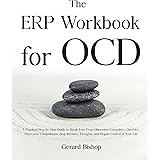Many entrepreneurs discover that relentless activity does not automatically translate into substantial business growth. The sensation of being perpetually busy, yet not seeing the desired financial returns, is a common experience among small business owners and those aiming to scale their ventures. This phenomenon is often attributed not to a lack of effort, but rather to a misallocation of that effort across too many disparate initiatives. True progress in business, it is observed, often stems from a deliberate and focused application of resources toward the highest-leverage opportunities, transforming mere busyness into tangible business growth.
The underlying reason for this widespread issue is frequently found in a fundamental misunderstanding of strategic focus. Diligence without direction can lead to a scattering of resources, preventing any single endeavor from achieving critical mass. The analogy of using a magnifying glass to burn a hole in paper aptly illustrates this point; diffuse light, though plentiful, will not achieve the desired outcome unless precisely concentrated. Similarly, attempting to start multiple “parties” simultaneously, each requiring significant networking and promotional effort, almost invariably results in none truly taking off. This constant striving for too many objectives keeps businesses from breaking through revenue plateaus, such as the common struggle experienced at the $3 million or $10 million annual mark, as mentioned in the accompanying video.
The True Meaning of Strategic Focus
The term “strategy” is frequently invoked in business discussions, yet its core meaning is often diluted. At its essence, strategy is defined as the prioritization of limited resources against an array of unlimited options. It involves the critical decision of what to pursue and, equally importantly, what to explicitly *not* pursue. This rigorous selection process is vital because resources—time, capital, personnel—are inherently finite within any organization, especially within a small or scaling business environment. Without a clear strategy, resources are typically spread thin, leading to underperformance across all fronts.
The concept of “priority” itself has seen its original meaning altered over time. Historically, the word “priority” originated from “priori,” implying that only one thing could come first. The very idea of having “priorities” (plural) effectively neuters the term, suggesting that multiple items can hold the singular top position simultaneously. This modern usage often leads to an extensive list of equally important tasks, which, by definition, means there are no true priorities at all. For entrepreneurs, embracing the original definition of priority—identifying the one single most impactful initiative—becomes a powerful catalyst for focused action and accelerated business growth.
Understanding the Cost of Change in Business Growth Strategy
A significant impediment to achieving critical mass and sustained business growth is the often-overlooked “cost of change.” Every time a new initiative is introduced or an existing system is significantly altered, there is an immediate and tangible downturn in performance. Experience suggests that an initial revenue decrease of approximately 20% can be expected simply due to the disruption caused by change, even before any potential upside might be realized. This immediate dip often requires a potential upside of at least 20% just to break even, making many minor “optimizations” or “hacks” financially questionable.
This reality underscores why countless entrepreneurial efforts, despite being well-intentioned, fail to yield significant results. Constant adjustments, new marketing promotions, or conversion mechanism changes, while seemingly productive, often amount to little more than productive distractions. Businesses can become perpetually stuck in a cycle of implementing new ideas, never allowing enough time for any single change to fully mature and deliver its intended benefits. The team is forced to relearn systems, customers may experience confusion regarding positioning, and overall momentum is frequently lost. This iterative tweaking prevents the business from ever reaching a state where word-of-mouth momentum, brand reputation, and significant scaling can naturally occur.
Identifying and Attacking the Business Constraint
For any business seeking meaningful progress, it is imperative to identify and relentlessly focus on its single biggest constraint. This is the bottleneck that, if removed, would unlock disproportionate business growth. Often, this constraint is not where entrepreneurs prefer to focus their energy; it is frequently an area where they lack expertise, dislike working, or have historically outsourced. A sales-focused entrepreneur, for example, might continuously refine conversion processes, even if the real issue is a lack of qualified leads at the top of the funnel. Optimizing conversion past a certain point, when lead generation is the bottleneck, yields diminishing returns because the total “bucket” of potential customers remains too small.
The principle here is to accept that some aspects of the business, particularly those performing at or above industry benchmarks, are “good enough” and should be left untouched. Jack Dorsey’s wisdom, “Make the details perfect, limit the number of details,” resonates deeply with this philosophy. Instead of striving for perfection in non-critical areas, bandwidth must be freed up to tackle the difficult, unglamorous, but high-leverage constraint. This might involve dedicating resources to improving product quality so it generates organic buzz, or investing heavily in marketing to significantly expand reach. The highest leverage points in a business typically exist at either the product’s core excellence or its market penetration, rather than in the myriad of processes in between.
The Discipline of Doing Nothing New
The ultimate productivity hack, paradoxical as it may sound, is to do nothing except the task that has been designated as the singular priority. Any activity that does not directly contribute to the accomplishment of that specific task becomes a distraction. This perspective redefines focus as the active elimination of alternatives and commitment as the removal of all other options. The word “decide” itself, stemming from “de-caedere,” means “to cut off,” highlighting the inherent act of exclusion required for true decision-making.
Entrepreneurs, particularly those in small businesses, are often characterized by an abundance of ideas but a scarcity of resources to pursue them all effectively. This creates a critical tension: the desire to innovate versus the capacity to execute. The path to overcoming revenue plateaus, such as being stuck at $1 million or $3 million per year, often involves a radical shift from constant innovation to disciplined execution of a select few critical initiatives. Businesses that truly thrive, like the famous chicken tender chain Raising Cane’s, exemplify this principle by achieving monumental success through militant focus on a very limited, high-quality offering, refusing to diversify prematurely or unnecessarily. This intense focus allows for excellence in execution that a fragmented approach simply cannot match.
Allocating Effort to the Best Opportunity Vehicle
Achieving significant business growth demands a level of patience that often runs counter to the entrepreneurial spirit. Patience, in this context, is not passive waiting, but rather the strategic management of a vast pool of ideas while deliberately executing on only the most impactful ones. Many successful entrepreneurs maintain extensive “Mondo lists” of potential initiatives, recognizing that while many ideas are good, only a select few are truly transformative. It is not uncommon for a business with significant resources to pull only a handful of items from such a list over an extended period, perhaps three out of 200+ ideas in 18 months, as an example provided in the video.
The relief that comes from acknowledging this reality can be profound. By accepting that only a few things can truly be prioritized and executed well, much of the anxiety stemming from an ever-growing, undone to-do list can be alleviated. The focus then shifts entirely to mastering the execution of current, chosen initiatives. This disciplined approach often reveals that the biggest problem in business is not a lack of innovative ideas, but a lack of consistent, high-quality execution. The concept is simple, though far from easy, requiring a constant battle against the internal urge to chase every new idea. This perspective aligns with Warren Buffett’s analogy of a 20-punch card for lifetime stock investments: extreme constraint forces an unparalleled level of scrutiny and commitment to each decision, leading to significantly better outcomes and sustained business growth.








